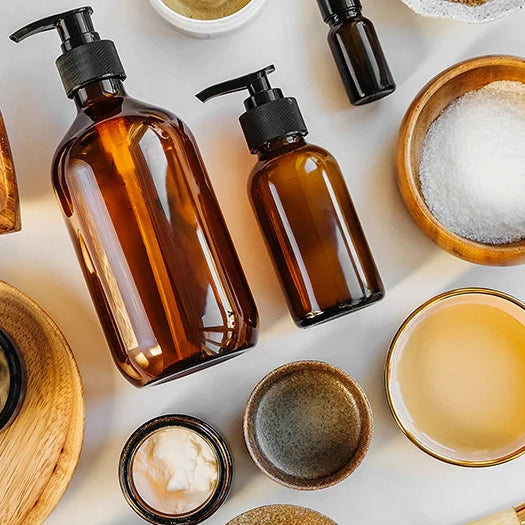
Keeping your skin hydrated is one of the most important things you can do to achieve a healthy glow. But there’s a difference between your skin being hydrated and moisturised. In the quest for the best natural and organic products to nourish our skin, it can be easy to confuse the two.
So how do we tell the difference between a product which helps hydrate your skin as opposed to simply moisturising it? A simple way to think about the difference is that hydrating ingredients are typically water-based, while moisturising ingredients tend to be oil.

So where does hyaluronic acid fit in, and why has it captured the hearts of beauty enthusiasts worldwide?
The Skin-Boosting Benefits of Hyaluronic Acid
Hyaluronic acid, often abbreviated as HA, is a naturally occurring substance found in our bodies, especially in our skin, connective tissues, and eyes. As we age, our skin loses hyaluronic acid and the ability to retain water in our cells.
As a water-based ingredient (or humectant), one of the biggest benefits of hyaluronic acid is its outstanding ability to draw moisture into the skin. In fact, hyaluronic acid can actually hold up to 1,000 times its weight in water, acting like a moisture magnet. This helps plump the skin, reducing the appearance of fine lines and wrinkles, and leaving it supple and rejuvenated. The intense hydration effect can also help improve elasticity, working wonders at restoring bounce and firmness to the skin.
One of its other great benefits of hyaluronic acid is its ability to support a healthy skin barrier, which is vital for maintaining optimal skin health. Hyaluronic acid strengthens the skin’s natural barrier function, preventing moisture loss and protecting it from environmental aggressors. This makes it a great ingredient to help soothe and calm sensitive or irritated skin.
Hyaluronic acid is definitely a must-have in everybody’s skincare routine - no matter what skin type you have.

The different types of Hyaluronic Acid
Not all hyaluronic acids are created equal! Let's take a closer look at the different types of hyaluronic acid commonly used in skincare:
Low-Molecular-Weight (LMW) Hyaluronic Acid:
This type of hyaluronic acid has smaller molecules, allowing for better penetration into the skin. It targets the deeper layers, providing intense hydration and promoting collagen synthesis. LMW hyaluronic acid is ideal for addressing signs of ageing and improving overall skin texture.
Cross-Linked Hyaluronic Acid:
Cross-linking refers to the process of chemically bonding hyaluronic acid molecules to create a gel-like substance. This modification enhances its longevity, making it more resistant to degradation by enzymes in the skin. Cross-linked hyaluronic acid is often used in dermal fillers to add volume and minimise the appearance of wrinkles.
Sodium Hyaluronate:
This is the salt form of hyaluronic acid, obtained by modifying the acid's chemical structure. Sodium hyaluronate has a smaller molecular size than regular hyaluronic acid, allowing for better absorption and moisture retention. It is often used in serums, moisturisers, and other skincare products due to its ability to deeply hydrate the skin.
As hyaluronic acid draws in moisture from the air and its surrounds, applying a hyaluronic acid serum to damp skin allows it to be absorbed more easily, producing better results. It also seems to perform best in humid climates. For those of us who live in the drier parts of Australia, applying your hyaluronic acid serum after the shower while your bathroom is still humid can help lock in the moisture.
Whether you're battling dryness, fine lines, or dullness, incorporating hyaluronic acid into your routine can make a world of difference. So, go ahead, give your skin the gift of hydration and watch it bloom with radiance!
Remember, everyone's skin is unique, so it's essential to find the right hyaluronic acid product that suits your needs.





